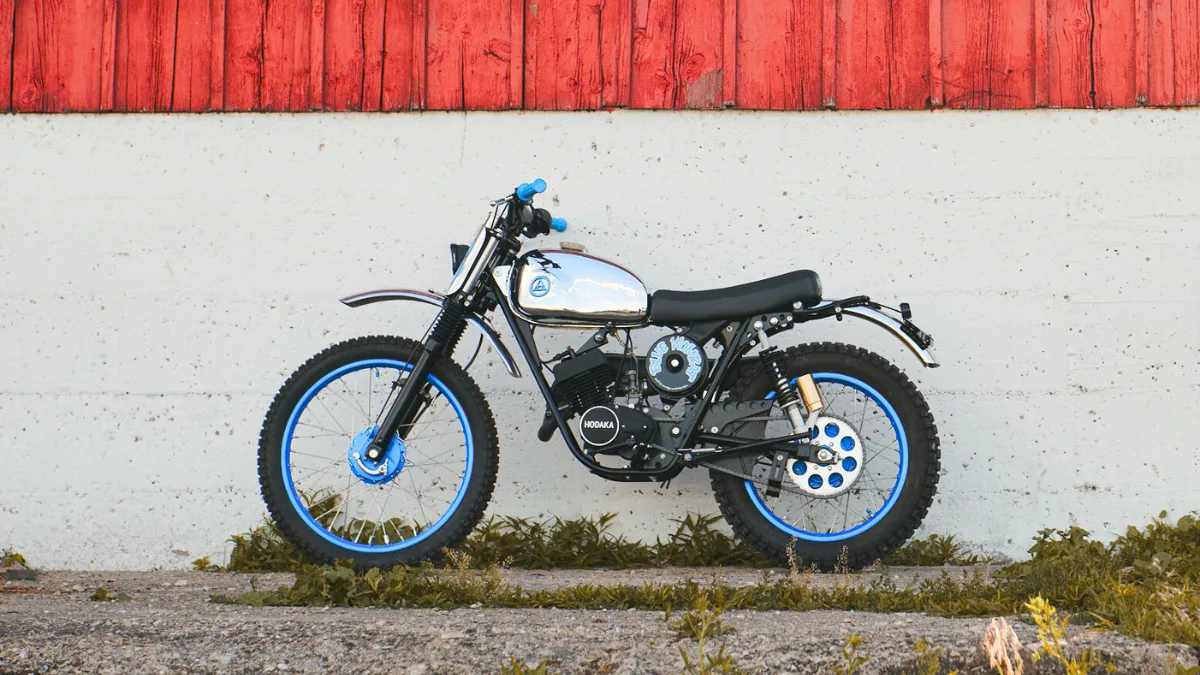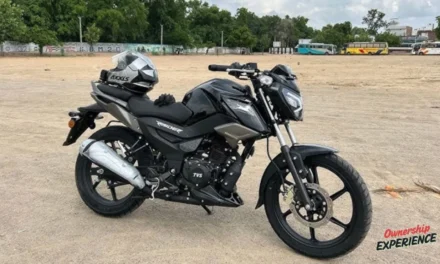In 1961, Farm Chemicals of Oregon—a fertilizer company in the wheat town of Athena—faced a problem. U.S.-Japan trade restrictions made exporting agricultural products tricky. Their solution? Pivot to motorcycles.
Through their subsidiary PABATCO, they bartered Oregon wheat for Japanese goods, starting with Yamaguchi’s 49cc scramblers. But when Yamaguchi went bankrupt in 1963, PABATCO turned to Hodaka Industrial, a Nagoya-based engine maker founded in 1951, to salvage their motorcycle venture.
The partnership was unconventional: Oregonians designed bikes for American trails while Hodaka handled production. By 1964, the first Hodaka—the Ace 90—debuted. With its 90cc two-stroke engine, chrome “toaster” tank, and $399 price tag, it became the spark plug of America’s trail bike boom.
The Hodaka Formula

Hodaka Motorcycles at Dealerships
Hodaka’s formula was simple: build cheap, tough, and fun bikes. PABATCO mandated a unified design—bright red paint and tubular steel frames inspired by British trial bikes—to streamline production.
The Ace 90’s engine borrowed Hodaka’s machine-tool expertise, featuring a patented spring-loaded shifter adapted from lathe parts for durability.
But it was the quirky branding that stole hearts. Marketing manager Marvin Foster named models like the Super Rat (a motocross-ready Ace 100) and Combat Wombat (a nod to Australian marsupials).
These playful monikers, paired with cartoon mascots, turned Hodakas into cult favorites. Motorcycle Classics noted, “The names weren’t just catchy—they embodied the bike’s rebellious spirit.”
Domestic Success and Competitive Pressures
By 1970, Hodaka sold thousands of bikes monthly, with nearly 150,000 units sold in North America by 1978. Their secret? Out-of-the-box race readiness. Privateers like Tommy Croft dominated local scrambles on stock Super Rats, while factory rider Harry Taylor clinched a 100cc class win at Daytona in 1968.
But the 1970s brought fierce competition. Yamaha’s DT-1 (1968) and Honda’s CR125 Elsinore (1973) raised the bar for performance. Hodaka’s small-bore bikes, while reliable, couldn’t match the R&D budgets of the “Big Four.” As Motorcycle Classics put it, “Hodaka was David in a land of Goliaths.”

1973 hodaka wombat
International Reach and Cultural Impact
PABATCO distributed Hodakas globally, from Australia’s Outback to European enduro circuits. In Japan, Hodakas were rebadged as PABATCO Riders. At the same time, British firm Rickman built premium Metisse frames around Hodaka engines for motocross purists.
The brand’s legacy endures in museums like Iowa’s National Motorcycle Museum, which showcases the 1976 Road Toad—a street-legal trail bike with oil injection. Recent documentaries and articles, including a SlashGear feature, hail Hodaka as “the little brand that outsold giants in its niche.”
Read: How a Man’s Obsession Builds St. Charles Motorcycle Museum
Hodaka’s Downfall & Market Shifts
Hodaka’s downfall wasn’t due to poor engineering—it was economics. The 1970s yen-dollar crisis (from 360 yen per dollar in 1970 to 210 by 1978) crushed PABATCO’s margins. Parent company Shell Oil, which acquired PABATCO in 1965, grew impatient with losses. Meanwhile, riders shifted toward larger street bikes during the 1973 oil crisis.
By 1978, Hodaka closed its doors. Shell sold tooling to Korea’s Daelim, and the last bikes rolled out of Athena. As fans shared, “It was the end of an era for affordable, no-nonsense dirt bikes.”

1969 Hodaka Super Rat
Hodaka’s Legacy: Clubs, Events, Auctions
Today, Hodaka’s spirit thrives. The Hodaka Club, AMA-chartered since 2006, unites 2,000+ members worldwide. Each June, Hodaka Days in Athena draws riders for vintage races, trail rides, and meetups with original PABATCO staff like designer Chuck Swanson.
Collectors are taking note: A 1970 Ace 100 sold for $ $2,750 at Mecum’s 2025 Las Vegas auction, while restored Rickman Hodakas fetched over $16,500. As Hemmings reports, “These bikes are no longer garage relics—they’re blue-chip investments.”
From Workshop Roots to Global Icon
Hodaka’s journey—from Oregon wheat traders to off-road legends—proves that ingenuity beats deep pockets. Their bikes weren’t the fastest, but they were accessible, forging a bond with riders that decades haven’t broken.
For modern enthusiasts, the adventure continues: Restore a Road Toad with guides from Strictly Hodaka, join the Hodaka Club’s global rallies, or hunt for NOS parts on eBay. As the tagline goes: “Ride a Hodaka today, and you’ll still be grinning tomorrow.”






